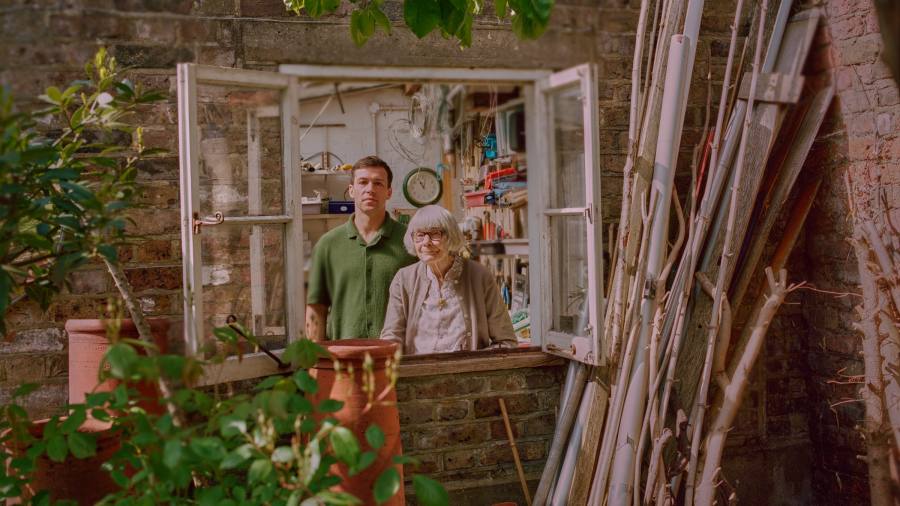
“I call it The Compound,” says architect-designer Joe Armitage, climbing off his motorbike on a residential road in west London. He leads me through a discreet garage door and onto a lawned garden dotted with spring flowers. A quince and a 400-year-old mulberry tree stand guard to the rear of a tall, double-fronted house overlooking the River Thames.
Four generations of the Armitage family have lived for nearly a century in a cluster of houses on this plot – a small British dynasty of designers and craftspeople. The original house, known as Number One, built in 1600 and extensively altered in 1790, was bought by the late Yorkshire-born architectural sculptor Joseph Armitage in 1930. Armitage and his team’s work has featured on public buildings in London and New Delhi, including India House, South Africa House and the rebuilt Bank of England, although his most recognised design is the National Trust’s oak-leaf logo.
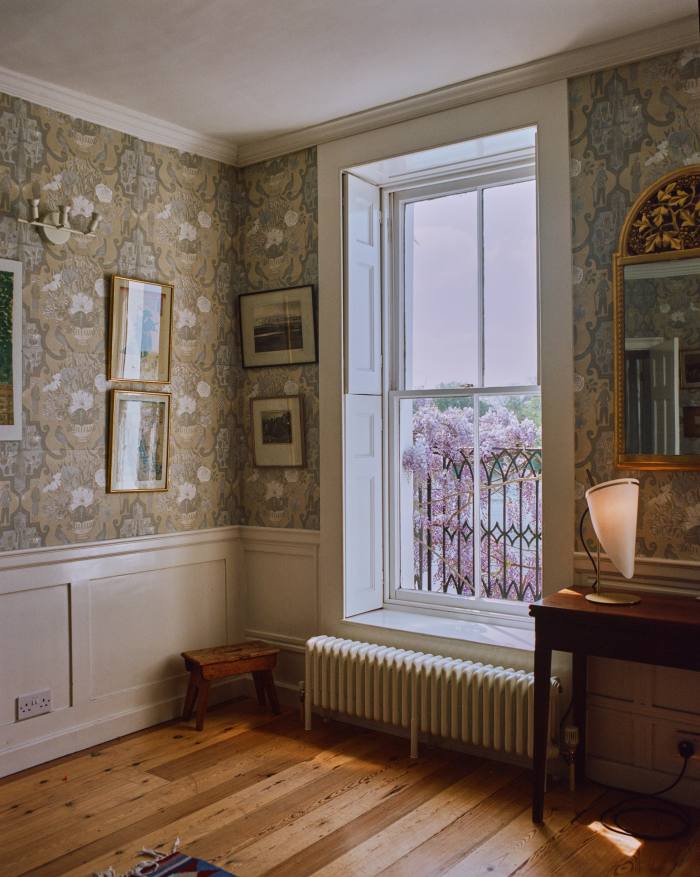
Armitage’s son, Edward, was a modernist architect who designed a hospital at Ludhiana in India. He married Marthe Armitage, whose family had moved into a neighbouring house (into one of two houses built by Joseph, known as Number Four and Five) when she was nine years old. Marthe went on to become a distinguished designer of hand-drawn wallpapers and fabrics, her work discovered more widely only when she was in her mid-70s. She is now aged 93, and her studio, run by her daughter, Jo Broadhurst, is thriving.
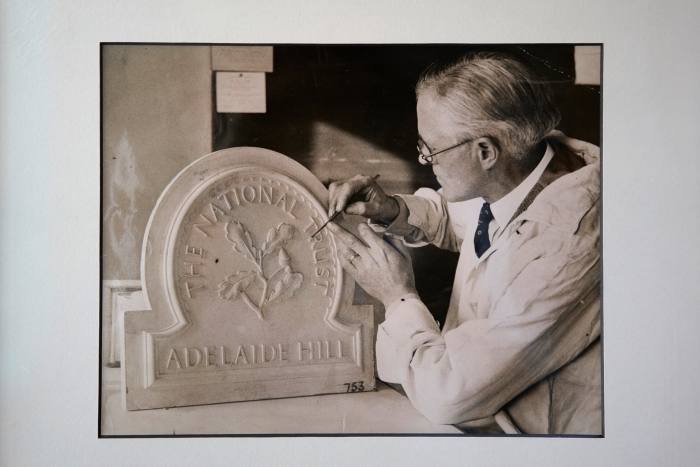
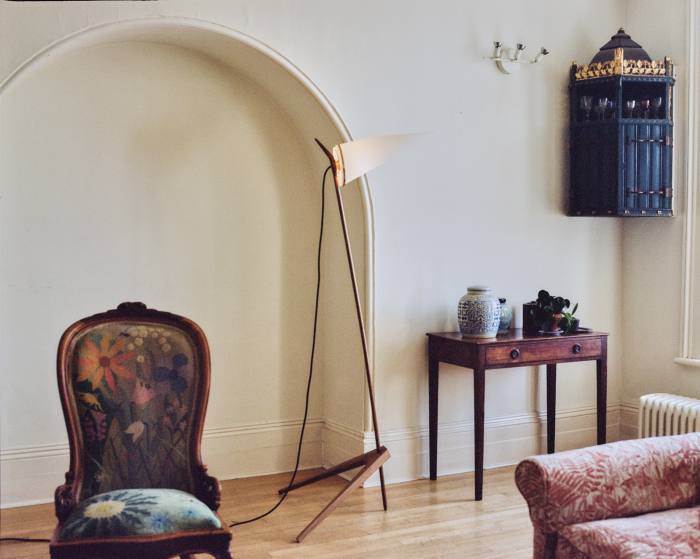
Today, the family legacy is also carried on by her grandson Joe. A trained architect and former design director at the lighting brand Tala, he began redesigning (at Marthe’s request) a distinctive floor lamp first made by Edward in 1952 when the couple was living in India. That lamp has now developed into a collection of floor, accent, suspension and wall lights (available through SCP and The Future Perfect). The latest addition, a chandelier, was unveiled at Nilufar during this year’s Milan Design Week.
As he and his grandmother sit over mid-morning coffee and buns at the dining table in Number Two (split from Number One after Joseph’s death), Joe is contemplative. “It wasn’t until leaving university that it dawned on me that design was a profession – it was just what my family did. I grew up surrounded by all of this stuff: ‘That’s what granny designed. That’s granddad…’ It was so much a part of our identity I didn’t realise it was an industry.”
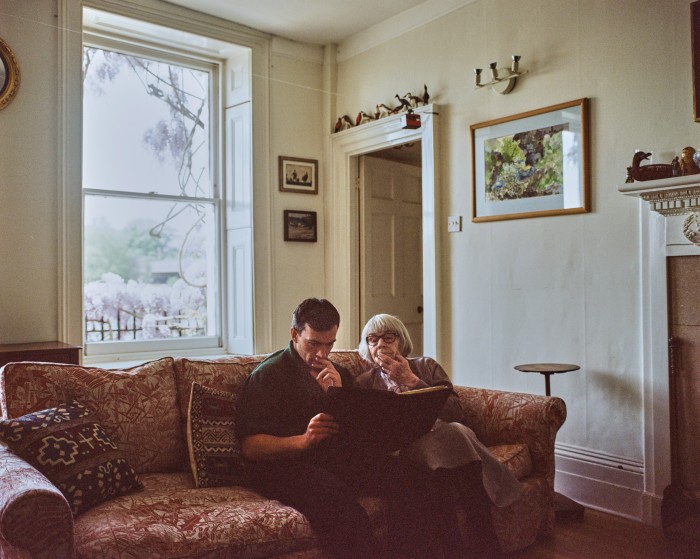
With its high ceilings, generous proportions and centuries-old patina, Number Two has a Bloomsbury-esque feel, or perhaps Armitage-esque. A portrait of a stern-looking Joseph hangs over the table, and one of his ornate cabinets sits in a corner. A chair with a textile floral design by Edward is placed next to a sofa covered in one of Marthe’s, while the fire surround is a Soane from the former Bank of England. Various walls are covered in Marthe’s papers: Solomon Seal is based on a plant that grows in the garden and another is called Windmill, for obvious reasons. In an upstairs room, Joe points out the sweet male and female figures depicted in the design that he says are his grandparents.
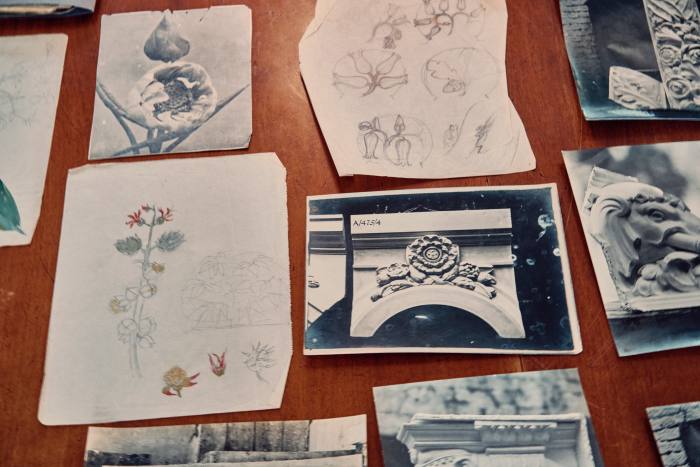

Marthe grew up in Number Four and, many decades later, so did Joe. In the ’50s, she and Edward built another house on the same row, known as Number Seven. After Joseph died, they moved into Number One. Now, 83 years after she first took up residence on this spot, she lives across the garden in a sunlit sanctuary converted from the old garage building. Bright paintings, both her own and those of friends, cover the walls, alongside family photographs and clippings that include a photograph of Marthe at The Art Workers’ Guild – where she was a Master – with the now King, while another depicts her younger self crouching over a hand-roll printer. “That’s me printing on the floor, just how I used to,” she says brightly. “I got the press in the ’60s, so I would have been in my 30s. It was hard, physical work printing wallpaper by hand.”
Marthe was one of only a handful of women who attended the Chelsea School of Art in the ’40s. “We weren’t taken seriously,” she says. “It was expected we’d all get married but actually there’s nothing worse than being a really passionate artist and being married.” Her plan to be a wife, mother and artist floundered. “I found that babies and painting simply did not go together because you need to cut yourself off completely when painting. It demands everything,” she recalls. “You’ve brought these children into the world and they have to come first. So Edward earned the money and I kept house.”

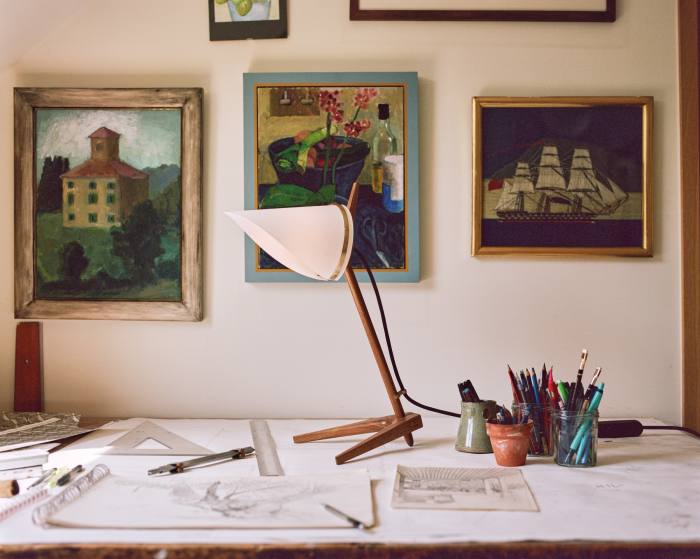
Even later, after the children left home, Edward preferred her not to paint because he found her too distant when she worked. “I had a room at the top of the house and he couldn’t bear it,” she says. “Strangely, when my mother became a widow at the age of 68, she started drawing, having not picked up a pencil all her life. She joined an art class in Essex and spent the rest of her life painting. She told me: ‘I couldn’t have done this when Daddy was alive – he would have stood on his head.’”
It was during the couple’s two years in India that Edward started making furniture, including the floor lamp from Indian rosewood and salvaged materials. With its long, leaning wooden stem and conical shade, it is almost bird-like in form. One of the three originals brought back to England is in Marthe’s house. “You can see it’s really thrown together,” says Joe, examining the back of the lamp. “That’s the lid of a paint pot and some motorbike spokes. It was pretty much things that he found.” Marthe interjects: “Because we used and reused everything in those days. Even paper bags.”
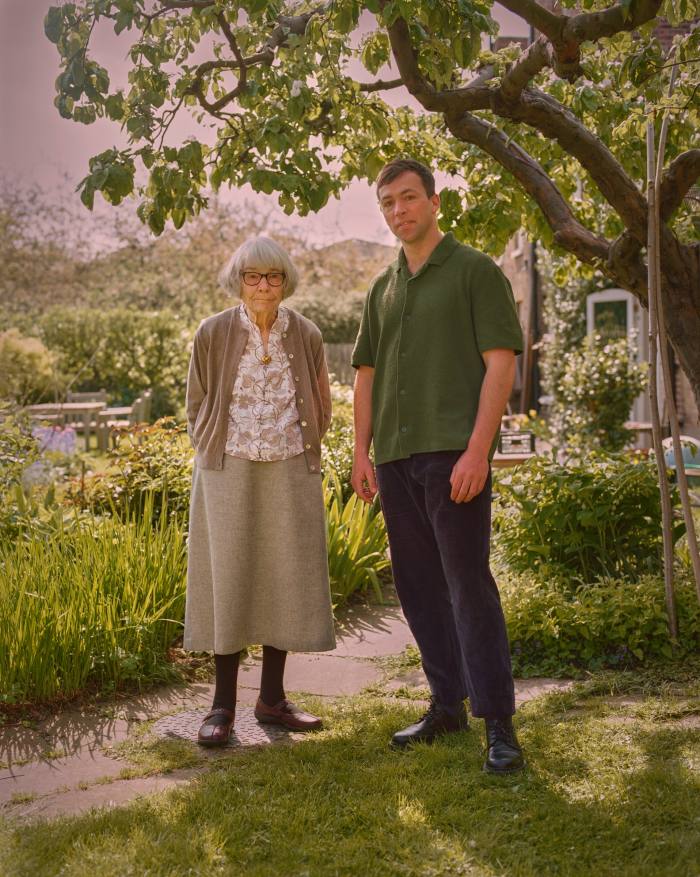
Joe is reflective. “My great-grandfather was doing all this decorative stuff and granny’s wallpapers are also very decorative, but the lamp comes from modernist thought. It’s a little more like Brazilian midcentury than European. I guess it’s Indian midcentury, Anglo-Indian!”
India also proved inspirational for Marthe, who recalls observing local artisans at a bazaar: “There were chaps printing bedspreads by the side of the road on a big table with woodblocks plonked in some dye and plonked on the fabric. It was a bit hit and miss. That stayed with me. I realised what was possible,” she says.
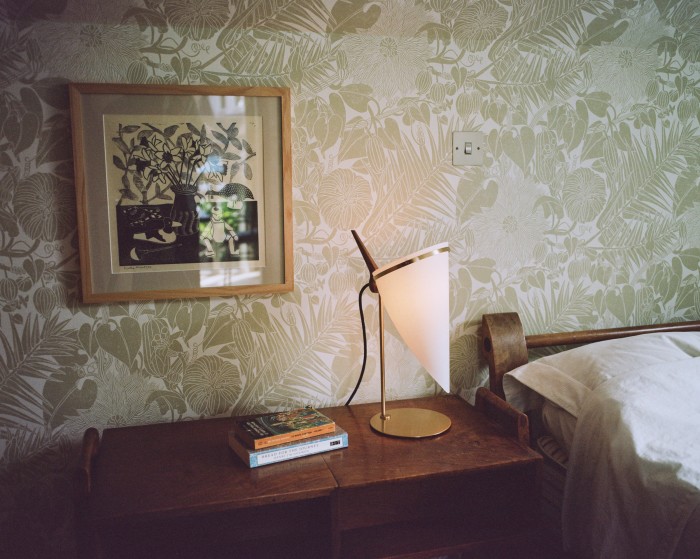
Back in England, Marthe found space on a landing and began to make her own wallpaper – first for her home and then for friends, before she gathered a few loyal customers. “I felt it was secondary to fine art, but knew in my heart it was good work.” Precise, intricate, romantic, fantastical and story-filled, her designs were inspired by plants along the river. “It’s nice to lie in bed or sit on the loo and think about the pictures,” she says of the illustrations.
In 2004, the wallpaper maker Hamilton Weston took on Marthe’s designs and interest in her grew. At an event held in her home, someone inquired about the floor lamp and she told them its story. “The next day, granny knocked on the door,” says Joe. “She said, ‘I’ve got 20 orders for that old lamp for you.’ She literally threw me in the deep end.”
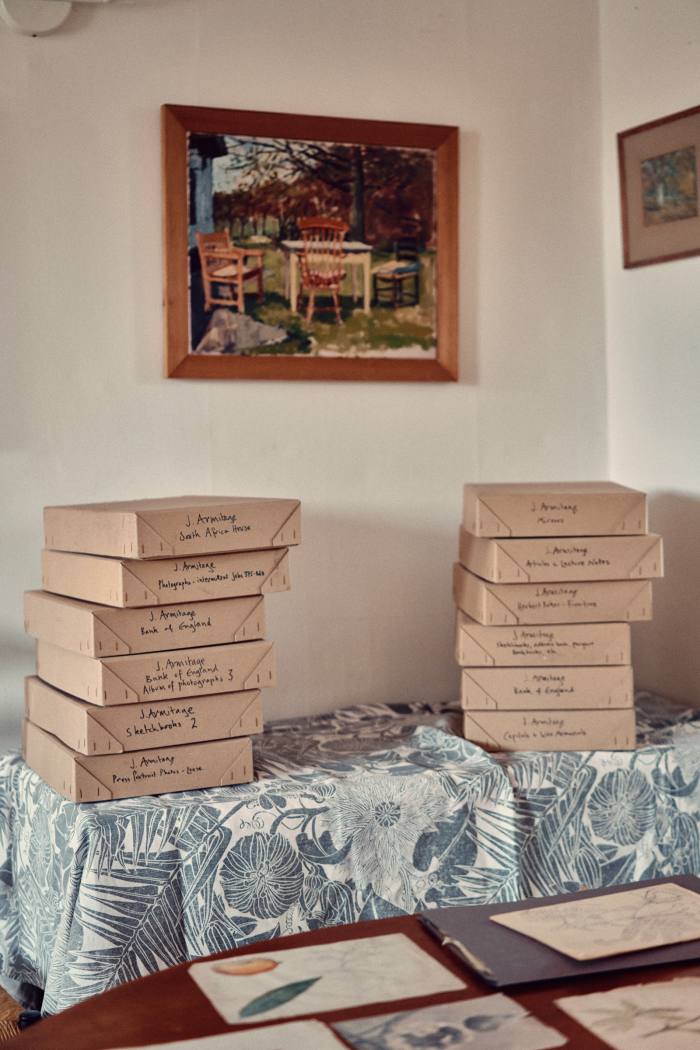
And deep into family history: while Joe no longer lives with the family, settling instead on the other side of central London, it was in the outbuilding of the house first lived in by his great-grandfather – at the encouragement of his grandmother – that he began to carve a renewed version of the lamp. It seems this strong sense of place, the rootedness, only engenders more creativity. “In a family that has stayed on this same spot for four generations, the artistic output is a product of all of the emotion that arises from that,” he says.
Before I leave, Joe re-examines the figures in his grandmother’s design, the Gardeners. “It’s you and granddad, isn’t it?” he asks Marthe. She presses her lips together and smiles. “Well, it wasn’t, but that’s the story now.”

